Oolong tea from Taiwan is also known as (Imperial) Formosa Oolong. Thanks to the ideal growing conditions, Taiwan porduces some of the best oolongs in the world. Sweetness and floral notes is something that most of these oolong teas have in common, where as some have a more ‘baked’ aroma then others.
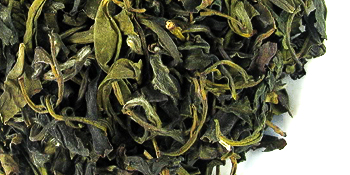 Pouchong – (also known as Baozhong or Qing Cha) a light floral oolong that undergoes a low oxidation and withering process (8% – 18%). It is lightly rolled with leaves of long, slightly twisted shape and with the most green color of all oolong teas. It is often placed somewhere between green and oolong teas. It originated in Pinglin where it is still produced. There are three main varieties of Pouchong – Wenshan, Nangang and Lanyang.
Pouchong – (also known as Baozhong or Qing Cha) a light floral oolong that undergoes a low oxidation and withering process (8% – 18%). It is lightly rolled with leaves of long, slightly twisted shape and with the most green color of all oolong teas. It is often placed somewhere between green and oolong teas. It originated in Pinglin where it is still produced. There are three main varieties of Pouchong – Wenshan, Nangang and Lanyang.
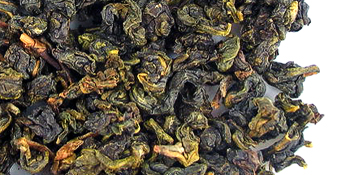 Dong Ding – (“Ice Peak” also known as Tung Ting) medium oxidized oolong tea (15% – 25%) that grows 600 to 1200 meters above sea level in Dong Ding Mountain. This tea is rolled slightly more then Pouchong, the leaves resemble a ball-shape. Its flavor has hints of honey and a long aftertaste resembling honeydew melon. It is believed that the first plants of Dong Ding Oolong tea were taken from Wu Yi, China.
Dong Ding – (“Ice Peak” also known as Tung Ting) medium oxidized oolong tea (15% – 25%) that grows 600 to 1200 meters above sea level in Dong Ding Mountain. This tea is rolled slightly more then Pouchong, the leaves resemble a ball-shape. Its flavor has hints of honey and a long aftertaste resembling honeydew melon. It is believed that the first plants of Dong Ding Oolong tea were taken from Wu Yi, China.
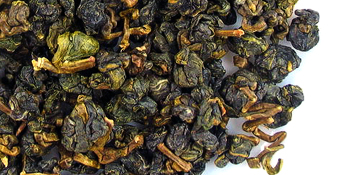 Gao Shan – (High Mountain Tea) high mountain tea which is also medium oxidized with characteristic semi-ball shape. It grows at high altitudes of 1000 meters or more. This is more of a general term for high mountain tea variations like Alishan, Lishan, Wushe, Yushan and Meishan fall into this category, where Alishan is the top-priced one. They commonly have a sweet, nectar-like fragrance and a light taste. Da Yu Ling is a high mountain tea that comes mostly from plantations located between 2300 – 2600 meters above sea level, which are the one of the highest tea regions in the world.
Gao Shan – (High Mountain Tea) high mountain tea which is also medium oxidized with characteristic semi-ball shape. It grows at high altitudes of 1000 meters or more. This is more of a general term for high mountain tea variations like Alishan, Lishan, Wushe, Yushan and Meishan fall into this category, where Alishan is the top-priced one. They commonly have a sweet, nectar-like fragrance and a light taste. Da Yu Ling is a high mountain tea that comes mostly from plantations located between 2300 – 2600 meters above sea level, which are the one of the highest tea regions in the world.
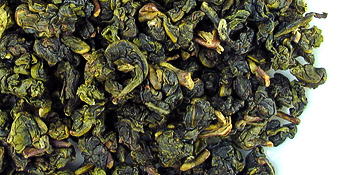 Tie Guan Yin – (“Iron Goddess”) this tea is heavily rolled into ball-shapes and can come in different roasting levels. The more roasted kind will have a strong baked aroma and a brown color, where as the lightly-roasted types and more green. It is mainly produced in China where the most famous An Xi Tie Guan Yin comes from, however the Taiwanese variation from Nantou uses a different variation of plant, but uses the same production technique.
Tie Guan Yin – (“Iron Goddess”) this tea is heavily rolled into ball-shapes and can come in different roasting levels. The more roasted kind will have a strong baked aroma and a brown color, where as the lightly-roasted types and more green. It is mainly produced in China where the most famous An Xi Tie Guan Yin comes from, however the Taiwanese variation from Nantou uses a different variation of plant, but uses the same production technique.
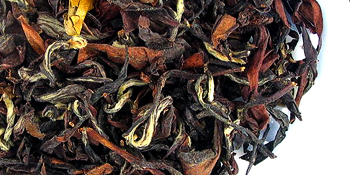 Dong Fang Mei Ren – (“Oriental Beauty” also known as Bai Hao Oolong or Peng Feng) one of the Champagne Formosa Oolongs, it has leaves reminiscent of autumn foliage or even fire, with its brown, red and yellow colors. It consists of mature leaves picked with its best grades picked during the summer. The leaves are heavily oxidized (50% – 70%) and undergo a heavy withering process. This tea has a sweet, smooth taste with baked, ripe-peach aroma. In order to accentuate it’s flavor it is customary to add a few drops of champagne. Origin of it’s name dates back to early 20th century when Queen Elizabeth II was presented with a sample was inspired to call it “Oriental Beauty”.
Dong Fang Mei Ren – (“Oriental Beauty” also known as Bai Hao Oolong or Peng Feng) one of the Champagne Formosa Oolongs, it has leaves reminiscent of autumn foliage or even fire, with its brown, red and yellow colors. It consists of mature leaves picked with its best grades picked during the summer. The leaves are heavily oxidized (50% – 70%) and undergo a heavy withering process. This tea has a sweet, smooth taste with baked, ripe-peach aroma. In order to accentuate it’s flavor it is customary to add a few drops of champagne. Origin of it’s name dates back to early 20th century when Queen Elizabeth II was presented with a sample was inspired to call it “Oriental Beauty”.
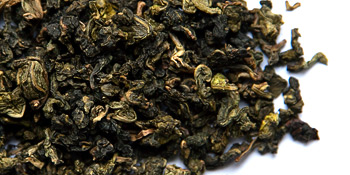 Jin Xuan – (Milk Oolong, Silk Oolong) perhaps one of the more special oolongs, as it has a distinct milk/creamy aroma, which develops due to the growing climate and conditions. It is a completely natural aroma and it does not occur as a result of any artificial flavoring. This tea has a very sweet and creamy aroma and a light, smooth finish. The leaves are heavily curled and have a dark green appearance.
Jin Xuan – (Milk Oolong, Silk Oolong) perhaps one of the more special oolongs, as it has a distinct milk/creamy aroma, which develops due to the growing climate and conditions. It is a completely natural aroma and it does not occur as a result of any artificial flavoring. This tea has a very sweet and creamy aroma and a light, smooth finish. The leaves are heavily curled and have a dark green appearance.
Cui Yu – (Jade Oolong) semi-oxidized oolong tea, also referred to a ‘green oolong’ because of its green appearance. It has a floral character and tightly curled leaves. It gives of a sweet scent, very similar to Jasmine and is a great entry point to Taiwanese Oolong teas.
Si Ji Chun – (Four Season Oolong) is also a High Mountain Tea, that was developed in the 1980s. It is semi-oxidized with ball-shaped leaves and a smooth, sweet, light flavor. Most of Si Ji Chun comes from low altitude plantations, which makes this tea both economic and widely available. The reason why it’s grown in low altitudes is because the flavor and quality of this tea remains the same regardless of how high the plants are grown.
Guides – Chinese White | Chinese Yellow | Chinese Red | Japanese Tea
